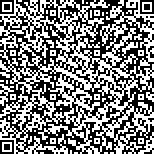| 摘要: |
| [摘要] 目的 分析产前抗生素暴露对晚期早产儿肠道菌群的影响。方法 选择2020年3月至2021年5月在广西医科大学第二附属医院住院治疗的晚期早产儿13例,胎龄340/7~366/7周。其中5例早产儿母亲于产前使用过抗生素(观察组),余8例早产儿母亲产前未使用过抗生素(对照组)。收集早产儿出生后第3(D3)、7(D7)、14(D14)天的粪便标本,应用16SrRNA高通量测序技术对细菌V3-V4区进行测序,比较两组肠道微生物的组成结构及多样性。结果 两组Shannon指数随婴儿日龄的增长而上升,观察组Shannon指数始终低于对照组,但仅在D3时观察组Shannon指数与对照组比较差异有统计学意义(Z=-2.717,P=0.007)。随着日龄的增长,对照组变形菌门占比降低而观察组占比升高;对照组厚壁菌门占比升高,而观察组占比降低。观察组副拟杆菌属水平呈先增高再降低趋势,而对照组几乎检测不到副拟杆菌属。在D3时,与对照组相比,观察组双歧杆菌属定植减少,厌氧芽胞杆菌属、肠杆菌属及克吕沃尔氏菌属定植延迟。结论 产前抗生素暴露会影响晚期早产儿肠道菌群定植,降低肠道微生物多样性水平。 |
| 关键词: 晚期早产儿 抗生素暴露 肠道菌群 高通量测序 |
| DOI:10.3969/j.issn.1674-3806.2022.03.10 |
| 分类号:R 722.6 |
| 基金项目:广西自然科学基金资助项目(编号:2017GXNSFAA198165) |
|
| Effect of prenatal antibiotics exposure on intestinal microbiota in late preterm infants |
|
ZHU Yun-lei, HUANG Qing-mei, HUANG Gui-lian, et al.
|
|
Department of Pediatrics, the Second Affiliated Hospital of Guangxi Medical University, Nanning 530007, China
|
| Abstract: |
| [Abstract] Objective To analyse the effect of prenatal antibiotics exposure on intestinal microbiota in late preterm infants. Methods Thirteen cases of late preterm infants who were hospitalized in the Second Affiliated Hospital of Guangxi Medical University from March 2020 to May 2021 were selected, with gestational age of 340/7- 366/7 weeks. Among the 13 preterm infants′ mothers, 5 mothers were treated with antibiotics before delivery(the observation group), and the other 8 mothers were not treated with antibiotics before delivery(the control group). Stool specimens of the premature infants were collected on day 3(D3), day 7(D7) and day 14(D14) after birth, and 16SrRNA high-throughput sequencing technology was used to sequence the bacterial V3-V4 regions, and the composition and diversity of the intestinal microbes were compared between the two groups. Results The Shannon index increased with the age of the late preterm infants in the two groups. The Shannon index of the observation group was always lower than that of the control group. However, there was significant difference in Shannon index between the observation group and the control group only on day 3 after birth(Z=-2.717, P=0.007). With the increase of the age in days of the late preterm infants, the proportion of Proteobacteria in the control group decreased while that in the observation group increased; the proportion of Firmicutes in the control group increased, while that in the observation group decreased. The level of Parabacteroides increased first and then decreased in the observation group, while the level of Parabacteroides was almost undetectable in the control group. Compared with the control group, the observation group had less colonization of Bifidobacterium, and delayed colonization of anaerobic Bacillus, Enterobacter and Kluyverella on day 3 after birth. Conclusion Prenatal antibiotics exposure can affect the colonization of intestinal microbiota in late preterm infants and reduce the level of intestinal microbial diversity. |
| Key words: Late preterm infant Antibiotics exposure Intestinal microbiota High-throughput sequencing |

